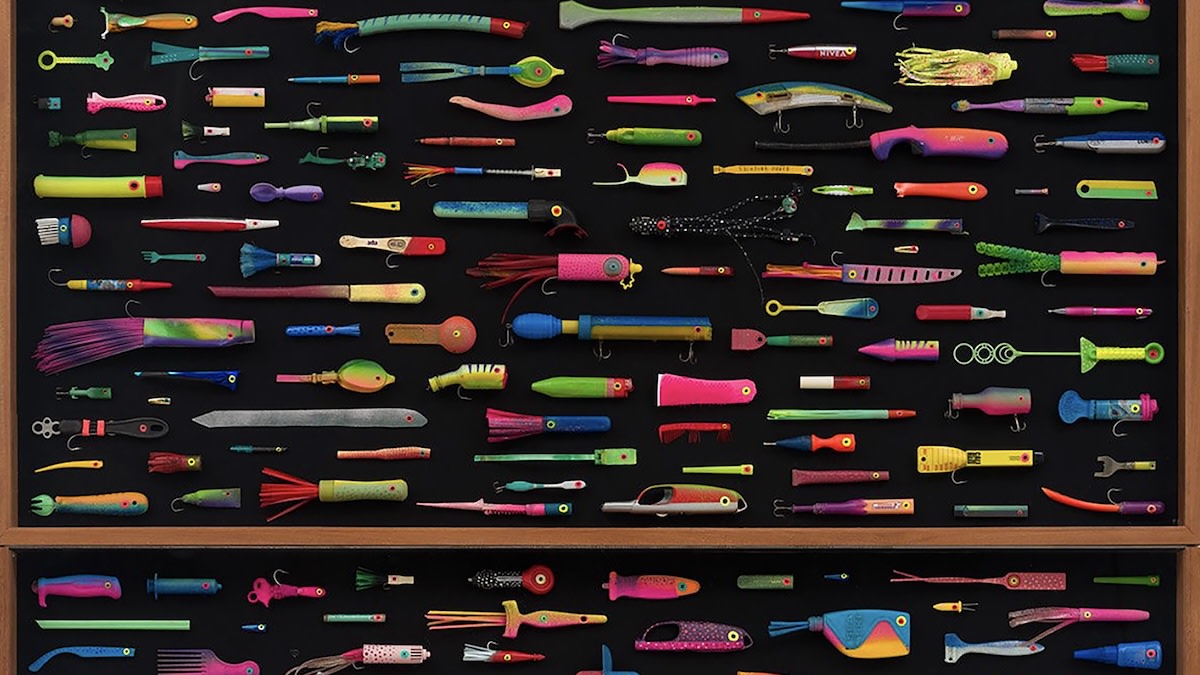
If you type “fishing lures” and “tampon” into Google, you’ll find YouTube videos about anglers who’ve used feminine hygiene products as bait for bass, catfish, lake trout, and rainbow trout.
You’ll also find comments from folks who consider the videos “LOL” and think those anglers are true innovators with hot advice for catching fish with tampons in open water or through the ice. Meanwhile, don’t be surprised if most anglers just don’t want to catch a fish that bad.
And some of us old outdoor writers know this: Attaching tampons to jig-heads or crafting lures from plastic applicators is neither novel nor innovative. Sure, thousands of people might watch your YouTube video about tampon lures, but that doesn’t make you a legendary lure manufacturer like Buck Perry, Tom Mann, or Nick Creme.
In fact, some of us remember the late 1980s and early 1990s when the environmental group Clean Ocean Action (COA) sold $6 fishing lures made from recycled tampon applicators, which they dubbed “Tampoons.” The applicators were free, and their supply was endless. They washed onto New Jersey shorelines by the hundreds of thousands whenever outdated sewer and stormwater systems overflowed into the Atlantic Ocean.
COA has long conducted spring and fall “beach sweeps” to remove trash from New Jersey beaches. From 1985 through 2021, in fact, the cleanups attracted 158,000 volunteers who contributed over 947,000 hours of labor. Throughout those first 36 years of beach cleanups, COA crews routinely found tampon applicators among the 7.94 million pieces of flotsam, jetsam, and other junk they collected.
We know what you’re thinking: “What’s the difference between flotsam and jetsam?”
Answer: Money, possibly. According to the National Oceanic and Atmospheric Agency, ocean trash isn’t just odds and ends. Flotsam and jetsam have specific meanings in maritime law, though both are associated with boats, ships, and barges.
“Flotsam” is debris not deliberately thrown overboard, often during accidents or shipwrecks. And jetsam? Think “jettison.” Jetsam is debris deliberately thrown overboard from vessels in distress, usually to lighten their load. If you find flotsam, you can’t keep it if the original owner reclaims it. But if you find jetsam, it’s yours to keep, sell, or trade.
Safe to say, tampon applicators are neither jetsam nor flotsam, though they’re often found amid both, but possibly in declining numbers. A 2021 COA report listed 3,211 tampon applicators in the year’s two beach sweeps, down nearly 18% from 3,896 found in 2019, and down nearly 20% from 3,992 in 2003.
A 1993 COA press release referred to the 4-inch plastic applicators as “beach whistles.” Apparently, children who find beached tampon applicators often blow into them to make noise they find entertaining.
OK. Back to fishing lures: There’s a reason most folks haven’t heard of the Tampoon. Even at $6, these lures apparently failed as cost-effective fundraising items. COA’s staff and volunteers of yesteryear made the lures by cleaning each tampon applicator, inserting a wooden dowel through its center, and attaching treble hooks in the bottom and a screw-eye in the front. They painted the Tampoons various colors, including classic pink or white. COA suggested fishing them with a flyrod, or trolling or casting them with weights.
The trouble is, Tampoon production was labor-intensive, and the lures apparently didn’t sell as fast as curios or fishing baits. An Associated Press article in January 1993 quoted a COA spokesman who said Tampoon sales were “about 300” in the first two years. Even after the AP article ran in newspapers nationwide, only 75 new orders trickled in the next two weeks.
Not to boast, but I have a Tampoon hiding somewhere in my myriad fishing tackle in the garage, basement, workshop, or boats. The COA spokesman sent me one after I interviewed him by phone for my column on March 14, 1993. As I recall, my Tampoon came with a small instruction sheet like those packaged with other fishing plugs, spoons, spinners, jerkbaits, and plastic baits.
My 1993 column shared the Tampoon’s history and some helpful tips: “Collected from the beaches of Sandy Hook, New Jersey, Tampoons are washed twice before assembly. Use Tampoons as you would soft plastic jerkbaits, giving the Tampoon a ‘wounded baitfish’ action. Are you ready to step up to the ultimate recycled fishing lure? Are you ready to fish with a Tampoon? Insist on genuine Tampoons!”
The Tampoon never enjoyed the fame of renowned lures like the Mr. Twister, Mepps spinner, Luhr-Jensen J-Plug, or Eppinger Dardevle spoon. Even so, COA’s 1995 annual report said the Tampoon was featured in the Smithsonian Institution’s “Ocean Planet” exhibition in Washington, D.C.
We also note that COA’s leaders weren’t the only folks to look at a tampon applicator and see potential fishing lures. In fact, some craft them into genuine art. A June 2022 article in the New York Times by Melena Ryzik profiled artist Duke Riley, who has scavenged tons of plastic trash from New York waterways and hauled it into his studio.
Riley’s creative “upcycling” of straws, vape pens, squirt bottles, tampon applicators, dental-floss picks, and empty shotgun shells is so exceptional that his collections are often featured in museums, art galleries, and other high-profile settings around New York and New England. His centerpiece at the Brooklyn Museum of Art in 2022, which was titled “Death to the Living, Long Live Trash,” featured hundreds of fishing lures made from discarded plastics. His sprawling display also featured scrimshaw he carved from other plastic trash.
Some might scoff at such artwork and high-brow recognition, but when’s the last time they made masterpieces from flotsam, jetsam, or other floating junk? It might be good enough for YouTube, but few curators would display it at museums or the Smithsonian Institution.
Feature image is the 2022 display by New York artist Duke Riley, titled “Monument to Five Thousand Years of Temptation and Deception V, VI, VII.” It features fishing lures made from plastic trash that Riley picked up on Atlantic Ocean beaches in the Northeast.




